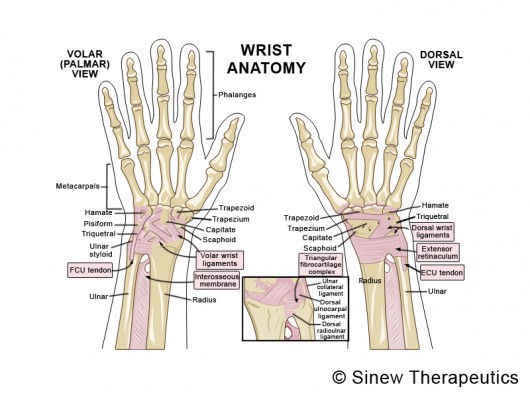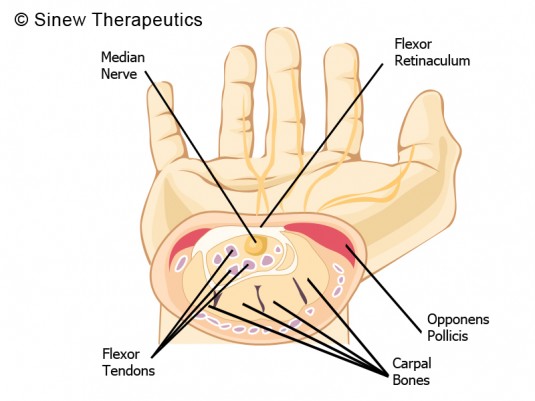There’s hardly an occupation, sport, or leisure activity that escapes the risk of a repetitive strain injury (RSI). In sports-related activities alone, repetitive strain injuries are involved in over 50% of the injures. In the workplace, repetitive strain injuries are becoming a frequent cause of work-related injuries and absenteeism.



RSI - Repetitive Strain Injury
A repetitive strain injury may also be called by any of the following terms:
* repetitive stress injury
* repetitive motion injuries
* repetitive motion disorder (RMD)
* cumulative trauma disorder (CTD)
* occupational overuse syndrome
* overuse syndrome
* regional musculoskeletal disorder
What Is A Repetitive Strain Injury And What Causes It?
A repetitive strain injury, as well as all of the above synonyms, refers to an astoundingly broad umbrella of injuries to the nervous system and musculoskeletal system. As the name implies, the injury is the result of any repetitive process that physically stresses the various body parts of the human anatomy. The most often affected structures are:
* muscles
* tendons
* nerves
These repetitive processes may take the form of any of the following:
* movement
* compression
* vibration
* positioning
* forceful exertion
Why some people get repetitive strain injuries and some don’t, given the exact same circumstances, is something that still isn’t clear. However, the main risk factor is doing anything in a repetitive fashion that physically stresses the body. Some common examples of factors that can lead to a repetitive stress injury include any of the following:
* carrying heavy school bags or work equipment
* poor ergonomic design in the workplace
* electronics, such as a blackberry, gaming device, or computer, that involve frequent repetitive finger strokes and movement.
* cradling a phone under the neck
* watching the television or computer screen with the neck tilted laterally.
* sleeping in a sited position (the neck usually falls forward)
* overall bad posture
* bone misalignments
* previous injury
* age-related degenerative processes combined with stressful activity
Examples of some common types of repetitive strain injuries would include:
* trigger finger
* golfer’s elbow
* tennis elbow
* carpal tunnel syndrome
* dupuytren's contracture
* writer's cramp
While repetitive stress injuries may occur to any area of the body that is repetitively stressed, the most often affected areas are the neck and upper limbs (often specifically referred to as upper limb disorder). This includes the following body parts:
* neck and cervical spine
* fingers
* hands
* wrist
* elbow
* forearm
* shoulder
What Are The Signs And Symptoms Of Repetitive Strain Injury?
While the symptoms will specifically be related to the area strained and the severity of the injury, some general symptoms would include any of the following:
* pain or discomfort that initially occurs during the repetitive action and subsides during rest
* over time, pain may progress in frequency and intensity if the causative action is continued and injury is left untreated
* tenderness over affected area
* decrease to loss of sensation, numbness, or tingling
* decrease to loss of mobility
* mild to severe range of motion limitations
* swelling over the affected area
* redness over the affected area
* mild to severe weakness
Strengthening Exercises
These Repetitive Strain Injury Exercises are ideal to build strength and flexibility.
Massage Treatment
These Repetitive Strain Injury Massage Techniques are of great value in pain relief; circulation stimulation; dispersing blood and fluid accumulations; swelling reduction; and relaxing muscle spasms, especially when used alongside the Sinew Therapeutics liniments and soaks.
ACUTE STAGE SYMPTOMS AND TREATMENT
This stage is characterized by swelling, redness, pain, and possibly a local sensation of heat, indicating inflammation. If coolness makes your pain feel better, then the Acute Stage Treatment is recommended.
ACUTE STAGE SYMPTOMS:
The acute stage starts the moment an injury occurs and lasts until the swelling and inflammation are gone. The swelling is the result of the blockage of blood, tissue fluids and circulation in the wrist because their normal movement has been disrupted by the force of the injury. Just like cars back up behind a traffic jam, causing congestion, exhaust and overheating; blood and fluids back up behind the injured wrist, causing pain, inflammation, lumps and swelling.
The sensation of heat is due to the warming action of the blood and fluids overheating in the injured wrist as they back up and accumulate. Stiffness and decreased mobility are due to spasms in tendons and ligaments that have contracted reflexively beyond their normal range from the impact of the injury.
As ligaments and tendons stretch and tear, blood from ruptured blood vessels becomes trapped in the local tissues. As the trapped blood clots up, it sticks the tissues together creating adhesions. Adhesions cause pain, inflammation and restricted movement because the layers of tissue that used to slide smoothly across one another now adhere and snap which interferes with normal functioning. It is essential to break up clotted blood as quickly as possible to prevent adhesions and scar tissue from forming.
During the acute stage it is very important to restore normal circulation to the wrist, break up clotted blood and stagnant fluids, reduce swelling, and reduce the redness and heat associated with inflammation. By restoring the flow of blood, fluids, and circulation in the wrist, then pain is relieved, damaged tissues can regenerate with healthy functional tissue, and the wrist can strengthen and regain it's mobility.
ACUTE STAGE TREATMENT:
1. Apply the Sinew Herbal Ice on your wrist to reduce redness, swelling, and inflammation while dispersing accumulated blood and fluids to help restore normal circulation to the wrist. This first-aid treatment is used in place of ice to significantly speed up the healing process. It reduces the swelling and inflammation more effectively than ice, allowing you to more quickly regain range of motion. Acute Sinew Liniment can be used in-between applications.
Ice is not recommended because it does not help repair damaged tissues and keeps everything in the injured area frozen, causing the stagnation of blood and fluids and the contraction of muscles, tendons and ligaments. In Chinese sports medicine ice is not used and is considered a culprit in injuries that donít heal well.
2. Massage your wrist with Acute Sinew Liniment to relieve pain, reduce swelling and inflammation, break up clotted blood and stagnant fluids, and stimulate circulation of blood and fluids to help cells quickly repair damaged tissues. Sinew Herbal Ice can be used in-between applications.
3. The Sinew Sports Massage Oil is recommended for use before and after exercise, sports and strenuous activity. It warms and stimulates your muscles, increases circulation and relieves tightness, hence improving your performance and helping to prevent injury.
CHRONIC STAGE SYMPTOMS AND TREATMENT
This stage begins once the swelling and inflammation are gone, but you still feel pain, stiffness, weakness, and/or sensitivity in cold and damp weather. If heat makes your pain feel better, then the Chronic Stage Treatment is recommended.
CHRONIC STAGE SYMPTOMS:
The chronic stage begins once the swelling and inflammation are gone, but you still feel aching pain and stiffness. This is because there are still accumulations of stagnant blood and fluids in your wrist that are blocking circulation and blood supply to damaged tissues, creating residual pain, stiffness and weakness. You may actually feel hard nodules like sand in the tissue, indicating accumulation, calcification, and adhesions, which all cause pain, stiffness, and joint instability.
Your wrist may feel more sensitive to the cold and ache in cold and damp weather due to impaired circulation. When you move your wrist you may hear a clicking or popping sound from the tendons and ligaments slipping very slightly in and out of their natural alignment indicating weakness and joint instability, causing chronic pain and a cycle of reinjury. These symptoms are often the result of failure to treat the injury properly from the outset and overicing.
Increasing circulation and blood supply to the damaged tissues is very important in treating chronic injuries because tendons and ligaments do not have an extensive direct supply of blood. That is why chronic injuries can be slow to heal. Increasing local circulation also prevents cold and dampness from penetrating the injured area, preventing pain and stiffness.
During the chronic stage it is very important to break up remaining accumulations of blood and fluids, and increase circulation and blood supply to the damaged tissues. By increasing circulation and blood flow in the wrist, then pain and stiffness is relieved, and the tendons and ligaments can strengthen to restore stability.
CHRONIC STAGE TREATMENT:
1. Massage your wrist with Chronic Sinew Liniment to relieve pain and stiffness, strongly stimulate circulation and blood flow to damaged tissues, and promote the healing of overstretched tendons and ligaments. The Sinew Relaxing Soak can be used in-between applications.
2. Soak your wrist with the Sinew Relaxing Soak to relax muscles and tendons that are in spasm, ease joint pain and stiffness, and improve range of motion. The Sinew Relaxing Soak is particularly useful if you feel restricted mobility in your wrist. Chronic Sinew Liniment can be used in-between applications.
3. The Sinew Sports Massage Oil is recommended for use before and after exercise, sports and strenuous activity. It warms and stimulates your muscles, increases circulation and relieves tightness, hence improving your performance and helping to prevent injury.







